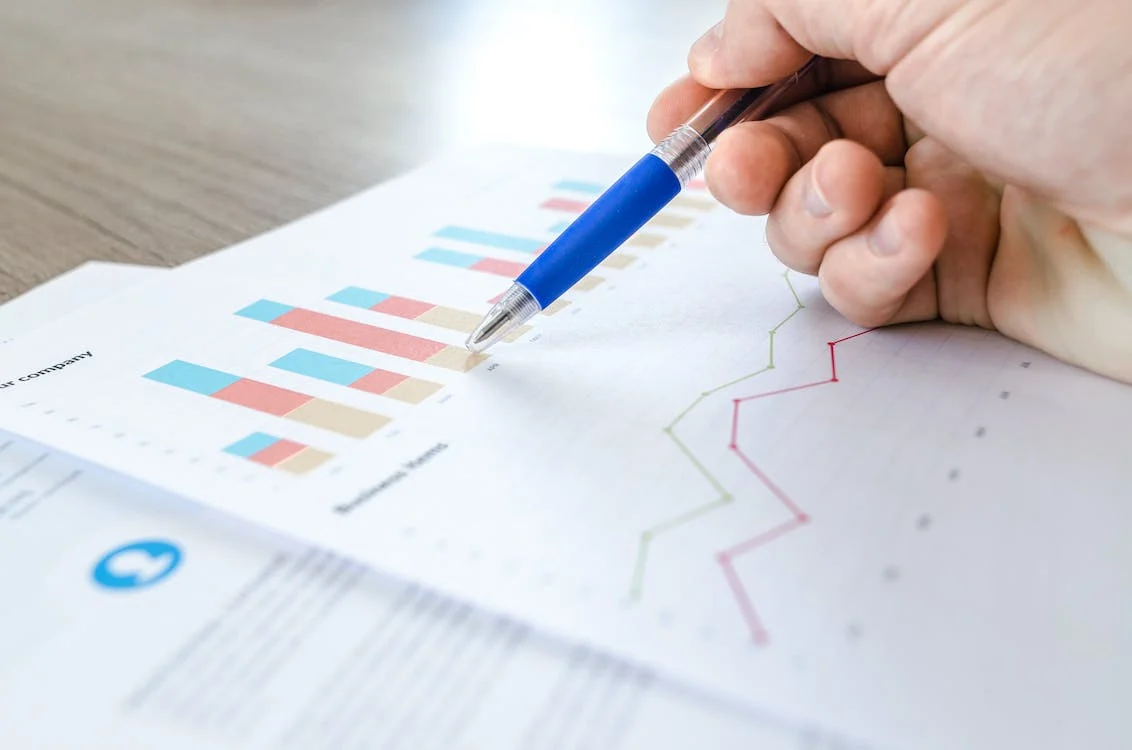Statistical Analysis for Business

With the power of statistical analysis, businesses can make informed decisions based on data. This involves gathering, examining, understanding, and presenting collected information to identify correlations, tendencies, and associations. Companies of all sizes hold a large volume of data which needs to be managed efficiently. The different aspects of statistical analysis for business are explored and how they can be used to drive business growth and success. Statistical analysis is used for collecting data, figuring out what it means and presenting what it means to decision makers. It involves discovering patterns and relationships within sets of data, which are then used to make decisions. Data is becoming more available for analysis, making statistical analysis for business a ready tool for better understanding an organization both today and in the future. This is essential to ensure successful operations in our modern world.
Importance
of Statistical Analysis for Business
In today's data-driven business world, the importance of statistical analysis cannot be overstated. Businesses that analyze their data can better understand how customers behave, where the market is going, and what needs to be improved internally. With this information businesses can make better decisions and have a better performance.
The use of statistics for analysis is becoming more important for businesses in modern times, making it indispensable for companies to prosper. Organizations can obtain a thorough understanding of consumer behavior, industry developments and their own internal operations via sound data analysis. This can be immensely valuable in refining business practices and efficiency. These insights can assist businesses in taking informed decisions and amplifying their overall productivity.
Types
of Statistical Analysis
There are several different approaches for a statistical analysis for business to get the results needed:
Descriptive Analysis is a way to summarize and present data so that it is understandable; this type of analysis is used to identify the mean, median, and mode of a set of data.
Inferential Analysis is used to form suppositions and make generalizations about a larger group based on a smaller sample of data.
Predictive Analysis is used to anticipate potential circumstances and determine chances by employing data. Finally, Prescriptive Analysis makes use of existing data to suggest future actions and optimize the decision-making process.
Tools
for Statistical Business Analysis
Businesses analyze their data using statistical techniques such as data visualization, correlation analyses, and predictive modeling. The outcomes can help them decide on the best course of action.
Pondering the many tools at our disposal, we find ourselves confronted with a plethora of potent statistical methods:
Regression Analysis explores the relationship between various variables, to find predictable relationship.
ANOVA, determines whether the differences between groups are statistically significant or mere flukes of chance.
The Chi-square test discerns the independence of two variables, delving deep into the inner workings of causation and correlation.
The t-test discovers whether the difference between the means of two groups is statistically significant.
Statistical Analysis for Business Steps

Step 1: Define the Problem: The first step in conducting statistical analysis is to define the problem or issue at hand. This requires a thorough understanding of the question needs to be answered. Identifying the problem accurately is critical, as it sets the tone for the entire analysis.
Step 2: Collect Data: After the problem is defined, the data must be collected. Collecting data can be done using company databases and collecting data directly from the people involved. This step requires a high level of attention to detail, as the accuracy and quality of the data collected will determine the validity of the analysis.
Step 3: Clean and Organize Data: Once the data has been collected, it must be cleaned and organized. This step is essential to ensure that the data is usable and free of errors, duplicates, or outliers.
Step 4: Analyze Data: The data must then be analyzed. Statistical methods are applied to the data to find patterns and relationships. This step requires a high degree of perplexity, as it involves the use of advanced statistical techniques that may be difficult to understand for non-experts.
Step 5: Interpret Results: When the data has been analyzed, it must be turned into information that is useful. This means that conclusions must be formed from the results to inform decision-making. This step requires a high degree of burstiness, as it involves several complex procedures and data manipulation techniques.
Step 6: Communicate Results: The final step is to communicate the results of the statistical analysis. This usually takes the form of published reports or presentations to management.
Common Applications of Statistical Analysis in Business
Statistical analysis can be a game-changer for business operations in numerous ways. Some of the most common applications of statistical analysis in business include:
Market Research: Statistical analysis is an essential tool to reveal complex insights from vast, murky, and uncertain market data. This can help businesses know the direction that they should take their marketing.
Customer Analysis: Statistical analysis can help businesses unleash the potential of their customer data. By tapping into this goldmine of information, businesses can decipher the behavioral patterns and preferences of their customers, segment them according to their unique characteristics, and develop customized products and services that the customer really needs.
Quality Control: Statistical analysis is a valuable tool for keeping product quality in check. By monitoring and analyzing quality control data, businesses can detect defects and inefficiencies in their production processes, identify areas for improvement, and continuously enhance their products' quality.
Financial Analysis: Statistical analysis is a powerful tool to unlock the hidden insights buried in financial data. By analyzing revenue and expense data, businesses can identify trends, anomalies, and patterns that could have a profound impact on their bottom line. This can help businesses make more informed financial decisions and optimize their revenue streams.
Challenges in Statistical Analysis for Business

Despite the transformative potential of statistical analysis, businesses face several hurdles when trying to adopt this tool. Some of the most significant challenges include:
Data Quality: The quality of the data used for statistical analysis is a critical factor that can make or break the accuracy of the results. Poor data quality can lead to incorrect conclusions and suboptimal decisions, potentially harming a business's bottom line and reputation.
Statistical Illiteracy: Many business professionals lack the necessary statistical knowledge to conduct statistical analysis themselves. This can lead to misunderstandings of the results and incorrect conclusions, posing a significant risk to a business's long-term success.
Data Privacy and Security: With the growing concerns around data privacy and security, businesses need to ensure that they collect, store, and use data in a responsible and ethical manner. This involves complying with data protection regulations, securing data storage and transfer, and implementing robust data governance practices that prioritize transparency, accountability, and fairness.
Conclusion
Statistical analysis is a dynamite-packed tool for businesses to make data-driven decisions. It involves the intricate process of collecting, analyzing, interpreting, and presenting data to unveil hidden patterns, trends, and relationships. By utilizing statistical analysis, businesses can acquire valuable insights into customer behavior, market trends, and internal operations. Furthermore, they can optimize their resources, reduce costs, and increase efficiency to soar to new heights. Nevertheless, businesses must remain vigilant of the challenges lurking in statistical analysis, such as the elusive data quality, perplexing statistical illiteracy, and the menacing data privacy and security concerns. In a nutshell, statistical analysis is a priceless weapon for businesses aiming to enhance their performance and attain an edge over their rivals in their industry.
Central Limit Theorem - A fundamental premise of statistics.
Control Charts - A method of statistically monitoring process to ensure that they have not fundamentally changed.
Standard Normal Distribution - A probability distribution that is normally distributed with a mean of 0 and a standard deviation of 1.
Sampling Distribution - The distribution of a given statistic of the equally sized samples from the same population.
Sign Test - The non-parametric test that can be used when your data is not normally distributed.
Significance Test - A test used to accept or reject claims or hypotheses about a population.
Design Of Experiment - Controlled experiments in experimental research resulting in purer data samples.
Binomial Distribution - Alternatively called the Bernoulli distribution, it is a discrete probability distribution where a single observation can have have only two outcomes.
t-Distribution - The t statistic estimates a population mean from small sample sizes, where the population standard deviation is not known.
Simple Regression Calculation - This technique will appeal to the fortune teller in you. It is a method of using the data that you have to predict data that you don't have. It is assumed that the data describes a linear relationship.
Two Concepts Of Regression Analysis - Here you will find information that is helpful to understanding and applying regression analysis.
Mean Average - The mean average , average or mean is used to generalize a set of data points.
Calculate Median - The median is another method for generalizing a set of data points.
What Is Correlation in Statistics - helps you understand what correlation means. You will find its formula as well as a link to an example that shows correlation in action.
What Is Standard Deviation will help you determine how "deviate" your data is from the mean or average. This is a key concept for the normal distribution, but it has other applications as well.
Standard Deviation Calculator - Use this simple calculator to calculate any standard deviation up to 25 data points.
Normal Probability Graphs - This tutorial introduces the concept of normal probability and the bell shaped curve.
Normal Probability Distributions - You will learn more about normal probability and some of its characteristics. A introduction to using normal distribution probabilities is also presented.
